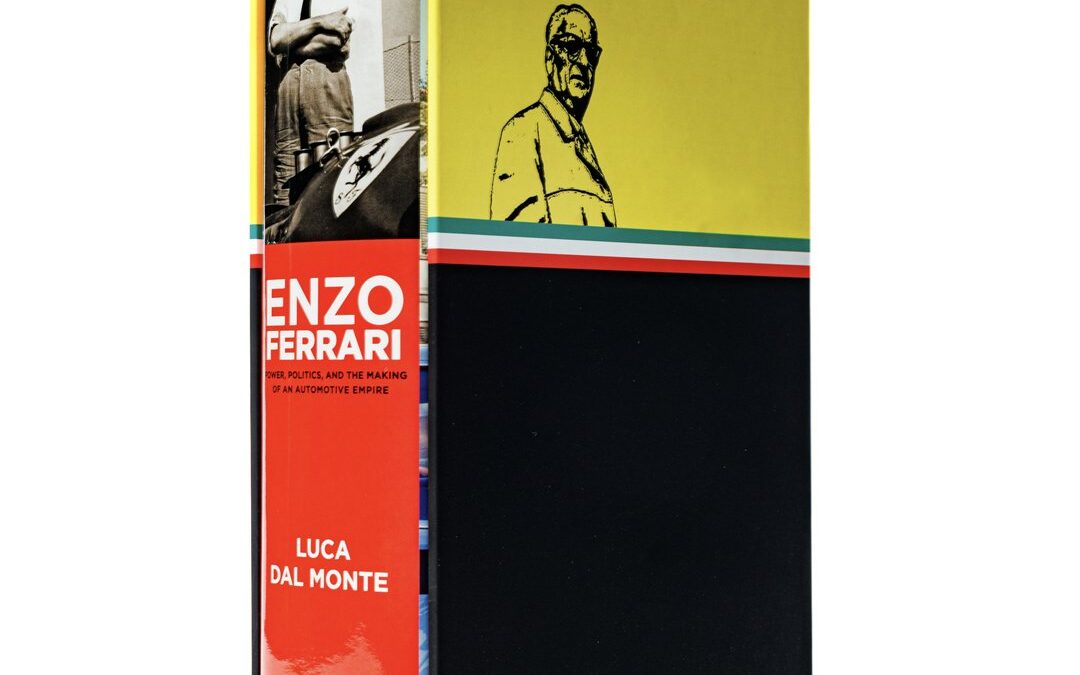
When Enzo Ferrari was born in 1898, automobiles were still a novelty in his native Italy. When he died ninety years later, the company he built stood at the top of a global industry, with the Ferrari name universally recognized for performance, racing prowess, and state-of-the-art Italian design. Enzo Ferrari: Power, Politics, and the Making of an Automotive Empire is the definitive account of an epic life.
Drawing on years of original research conducted in Italy and abroad, author and Ferrari insider, Luca Dal Monte, uncovers a wealth of new facts about Enzo’s origins, ambitions, business practices, and private life. The book revisits all the highlights of Ferrari’s rise to greatness: his driving career in the 1920s; his management of racing teams for Alfa Romeo in the 1930s; the launch of his own company and team in the late 1940s, and his unprecedented successes building cars for the road and race track in the following decades. But the book also examines lesser-known and sometimes hidden aspects of Ferrari’s career, from his earliest failed business ventures to his political dealings with Italy’s Fascist government, Allied occupiers, and even Communist leaders. And it lays bare the internal politics of the Ferrari company and team, whose leader manipulated employees, drivers, competitors and the media with a volatile mixture of brute force, paranoia, and guile.
Accompanying the in-depth text are extensive endnotes along with a full bibliography and index. The book is illustrated with four separate sections of photos, exhibits and artefacts, and opens with a foreword by former Ferrari president Luca Di Montezumolo, who previously served as the company’s Formula One team manager.
This is truly the definitive biography of Enzo Ferrari, one that makes previous accounts obsolete. Its depth, scale, and detail make it essential reading for automotive and motorsport enthusiasts. But other readers will be drawn to a sweeping story of Italian life, business, and culture during the 20th century.

The Rootes Group acquired some of the most famous names in the British motor industry: Hillman, Humber, Sunbeam and Singer cars, as well as Commer and Karrier commercial vehicles. Over the years, some of the models built by Rootes would become household names: the Hillman Minx, Humber Super Snipe, Sunbeam Alpine, Singer Gazelle, Commer Superpoise and Karrier Bantam. In its heyday in the late 1950s, Rootes was the fourth-largest manufacturer of cars and trucks in Britain, exporting to more than 180 countries worldwide, becoming a global automotive empire. In The Rootes Story – The Making of a Global Automotive Empire, the people and various companies involved with Rootes are profiled, as are the cars and commercial vehicles built by them, with specifications of principal models. Personal insight from employees is given along with valuable contributions from the Rootes family themselves.
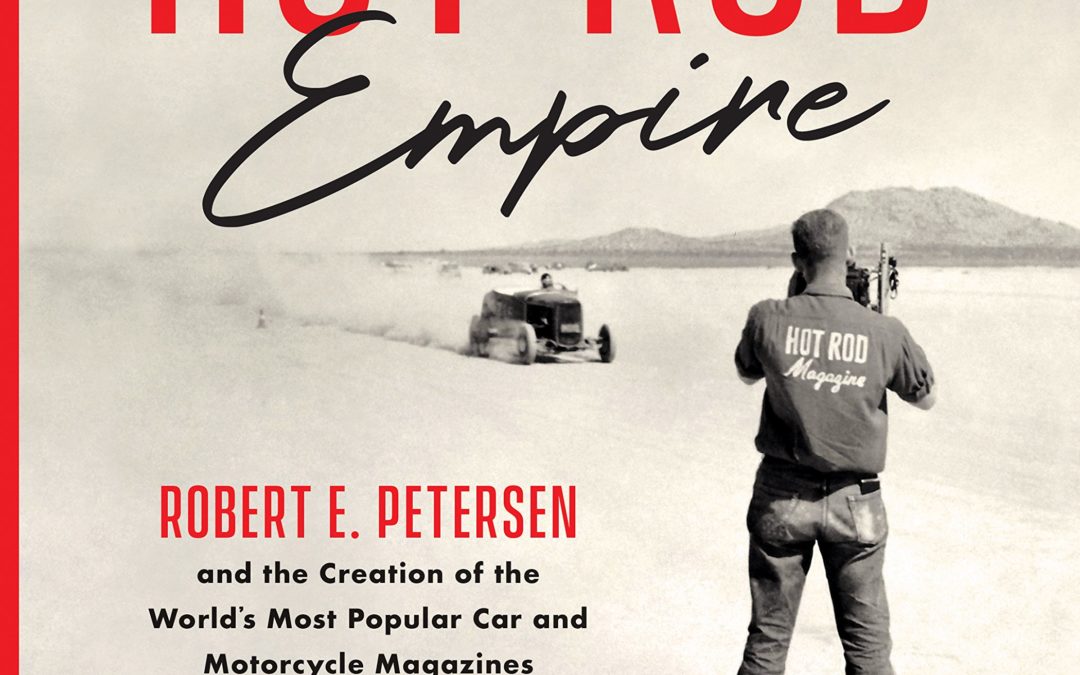
Hot Rod Empire details Robert E. Petersen’s creation of Hot Rod Magazine in the 1940s and the Petersen Publishing empire that grew to the mainstream juggernaut we know today.
The end of World War II marked the release of pent-up war-years energy and the desire to live. For many this meant indulging in long-denied purchases, like a new car. For another group, including young vets, it meant a return to car building and racing. Money, exciting new cars, and speed parts all flowed freely in post-war America.
Robert Petersen, a young SoCal-based photographer and Army Air Corps vet, noted the rapidly growing hot rod scene in and around Los Angeles. His first move was to organize the Los Angeles Hot Rod Exhibition in 1948. His second, and brilliant, move was to launch at the same event the first edition of Hot Rod magazine. From this launch pad, Petersen Publishing Company would grow to become the most influential enthusiast publisher in America.
Petersen’s magazines were rallying points for all aspects of the car, truck, and motorcycle hobbies, well as nurturing and promoting all aspects from car building to racing to show events. Hot Rod, Motor Trend, Car Craft, Motorcyclist, Off-Road and Four Wheel Drive and some 75 other enthusiast titles dominated magazine racks and provided substantial influence over transportation and numerous other hobbies.
Hot Rod Empire celebrates the birth and explosive growth of the transportation hobby under Petersen’s watch.
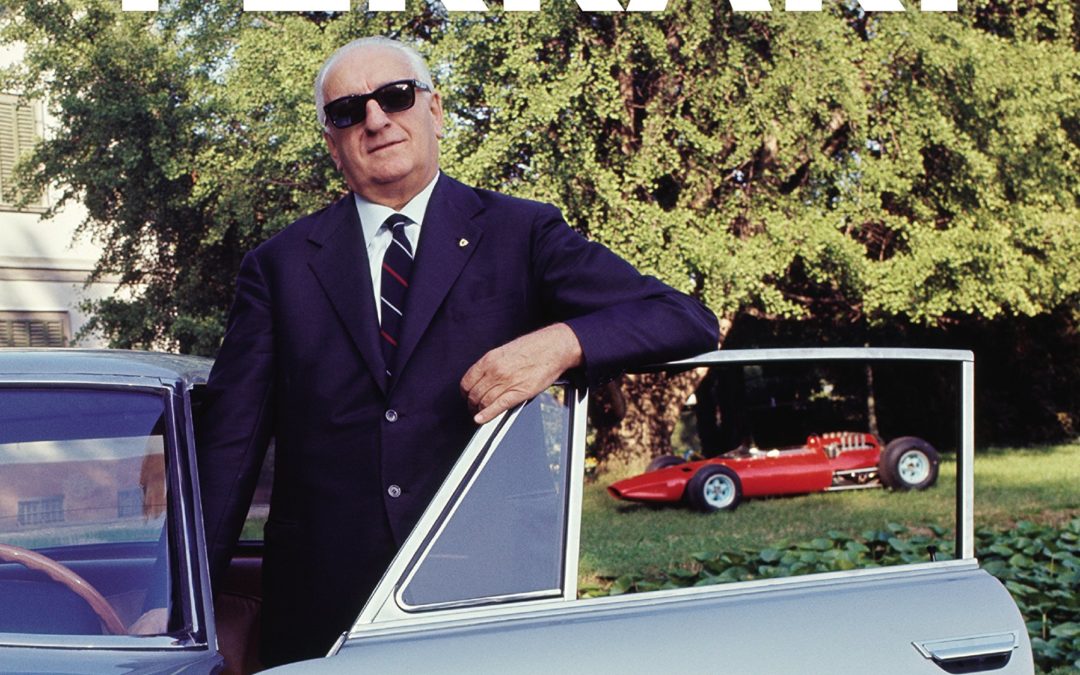
SOLD OUT
When Enzo Ferrari was born in 1898, automobiles were still a novelty in his native Italy. When he died ninety years later, the company he built stood at the top of a global industry, with the Ferrari name universally recognized for performance, racing prowess, and state-of-the-art Italian design. Enzo Ferrari: Power, Politics, and the Making of an Automotive Empire is the definitive account of an epic life.
Drawing on years of original research conducted in Italy and abroad, author and Ferrari insider, Luca Dal Monte, uncovers a wealth of new facts about Enzo’s origins, ambitions, business practices, and private life. The book revisits all the highlights of Ferrari’s rise to greatness: his driving career in the 1920s; his management of racing teams for Alfa Romeo in the 1930s; the launch of his own company and team in the late 1940s, and his unprecedented successes building cars for the road and race track in the following decades. But the book also examines lesser-known and sometimes hidden aspects of Ferrari’s career, from his earliest failed business ventures to his political dealings with Italy’s Fascist government, Allied occupiers, and even Communist leaders. And it lays bare the internal politics of the Ferrari company and team, whose leader manipulated employees, drivers, competitors and the media with a volatile mixture of brute force, paranoia, and guile.
Accompanying the in-depth text are extensive endnotes along with a full bibliography and index. The book is illustrated with four separate sections of photos, exhibits and artefacts, and opens with a foreword by former Ferrari president Luca Di Montezumolo, who previously served as the company’s Formula One team manager.
This is truly the definitive biography of Enzo Ferrari, one that makes previous accounts obsolete. Its depth, scale, and detail make it essential reading for automotive and motorsport enthusiasts. But other readers will be drawn to a sweeping story of Italian life, business, and culture during the 20th century.
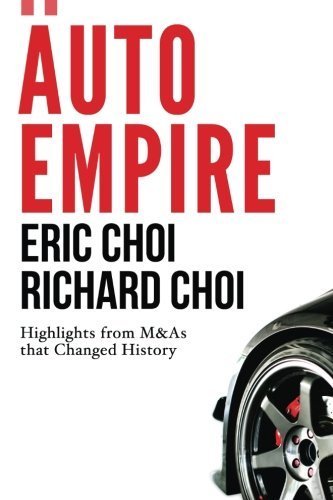
The automotive industry has a tumultuous history rife with back-room deals, brilliant innovation, colorful characters, and marked by the complete transformation of our planet. In Auto Empire, author Choi paints a compelling picture of the birth and growth of the modern auto industry. And how acquisitions and mergers, in particular, have paved the way for the auto industry of today and tomorrow. From the first steam-powered carriage, to alternative energy and self-driving cars, the world can barely accommodate the ambitions of this massive industry. But in Auto Empire, Choi fearlessly tackles the industry in all its glory and failings to illuminate how it transformed itself and the world. Choi unfolds a fascinating history that spans diverse industries, epic upheavals, and touches every corner of the world. Auto Empire seamlessly weaves the eras of the automotive industry into a thought-provoking portrait of its continued evolution through acquisitions and mergers. To think, we went from sweatshop assembly lines and 14-hour work days, to high-tech automation and digital innovation. In Auto Empire, Choi captures this amazing spirit of transformation.
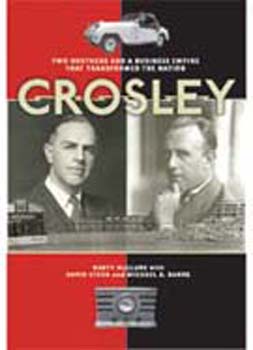
Set in the vibrant Industrial Age and filigreed with family drama and epic ambition, Crosley chronicles one of the great untold tales of the twentieth century. Born in the late 1800s into a humble world of dirt roads and telegraphs, Powel and Lewis Crosley were opposites in many ways but shared drive, talent, and an unerring knack for knowing what Americans wanted. Their pioneering inventions — from the first mass-produced economy car to the push-button radio — and breakthroughs in broadcasting and advertising made them both wealthy and famous, as did their ownership of the Cincinnati Reds. But as their fortunes grew, so did Powel’s massive ego, which demanded he own eight mansions and seven yachts at the height of the Great Depression. Rich with detailed reminiscences from surviving family members, Crosley is both a powerful saga of a heady time in American history and an intimate tale of two brilliant brothers navigating triumph and tragedy.

Lightning Strikes—The Lockheed P-38 tells the full story of one of the most successful and versatile aircraft of the Second World War. The P-38 (including its F-4 and F-5 photo reconnaissance models) eventually served with all the USAAF’s numbered overseas air forces, from early 1942 to VJ Day. The book describes the Lightning’s design and its technical details as it gradually evolved and improved, from the original XP-38 to its final variant, the P-38L-5. The main focus is on its service in the combat theaters, from the frigid, windswept Aleutian Islands in the North Pacific to the steaming jungles of the South Pacific and Southeast Asia, the burning sands of North Africa and the more temperate climes of Europe. All the units that flew the Lightning are included, as are the experiences of many of their pilots and ground crewmen as they fought the Japanese Empire and the European Axis. Also related are the P-38’s service with foreign (non-U.S.) air forces, its postwar commercial utilization as civilian aircraft and the surviving examples in museums around the world. The book is extremely well illustrated with nearly 400 high-resolution photographs, artworks, and graphics, and is supplemented by detailed appendices.
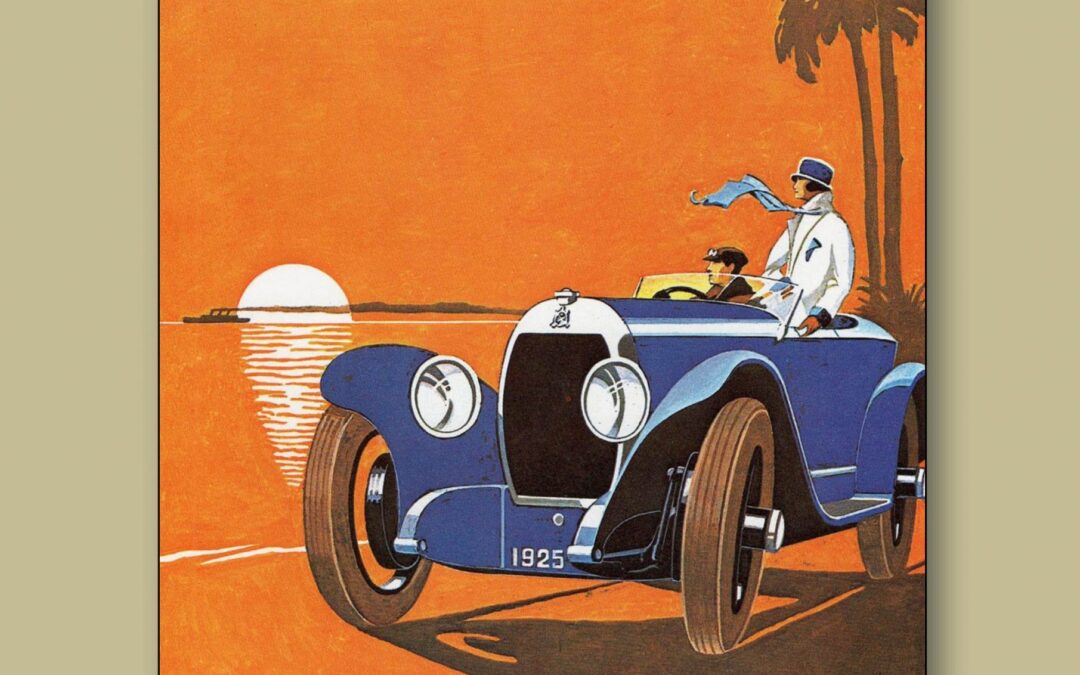
This book was inspired by an artist, Alex Kow, who worked for the Panhard & Levassor company from 1922 until the early 1960s, creating publicity posters, sales brochures and a whole range of artwork advertising the company’s cars.
Alex Kow also worked for another French car manufacturer: Hotchkiss. His art-déco style perfectly encapsulated the aspirations of a solidly middle-class car-maker whose origins stretched back to 1867, when the Hotchkiss company in France was founded as an arms manufacturer by an American, Benjamin Hotchkiss, requested to do so by Emperor Napoleon III. How Hotchkiss came to establish a French industrial empire is the story told in this book.
The Hotchkiss car-manufacturing business started in 1903, when orders for arms were in decline and other French car manufacturers were aware of Hotchkiss’s skills at fine-tolerance machining, sub-contracting machining crankshafts and honing cylinders to Hotchkiss. Hotchkiss soon realised it could make an entire car itself and did so.
The final vehicle built as a Hotchkiss was made in 1954, when a merger between Hotchkiss and Delahaye – both ailing car-makers – was agreed. Truck production at Hotchkiss continued until 1971, while making Jeeps under a Willys license for the French army and Ferguson tractors for farmers proved to be far more profitable than making cars.
Hotchkiss continued to make arms and military vehicles until 1971, whan a takeover by Thomson-Houston and subsequent nationalisation brought about the final disappearance of the renowned Hothkiss name.
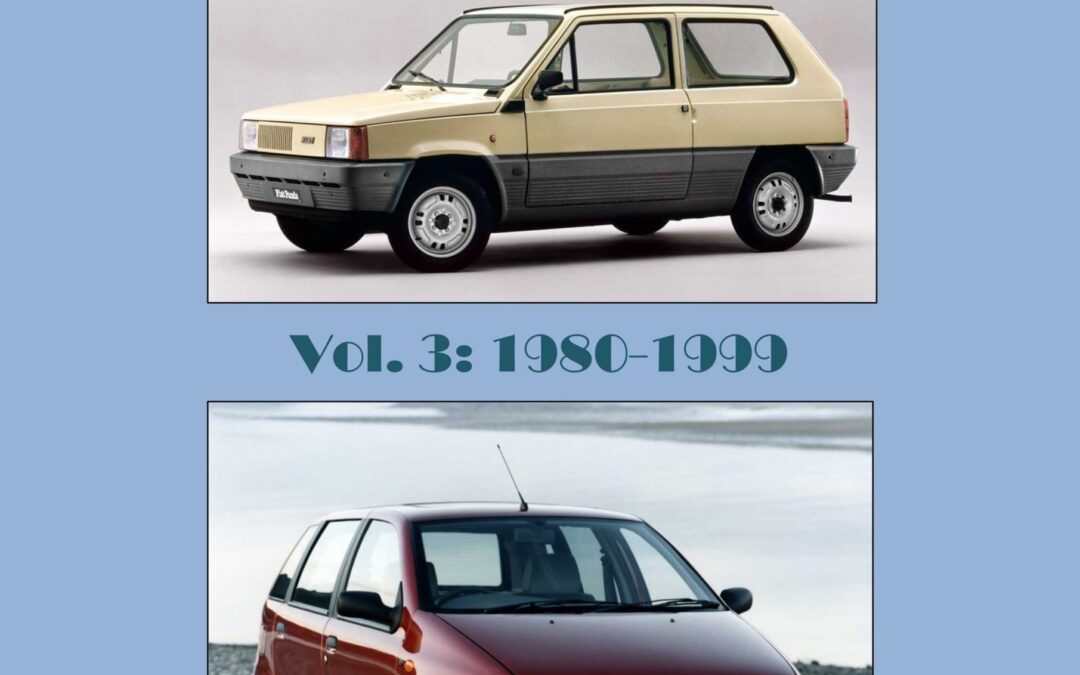
Fiat – Twenty More Years Volume 3 is the final volume on 100 years of Fiat automobiles. A4 format, soft colour covers, 125 pages with 3-4 images per page. Includes Image Credits, References, Bibliography and an Index covering all three volumes, 1899-1999.
This volume covers a period when rapid changes were taking place throughout Europe, including the collapse in 1989 of the USSR’s control of its eastern European empire, the Iron Curtain states of Poland, Hungary, Romania, Czechoslovakia, Bulgaria and the DDR – East Germany. This was almost immediately followed by the collapse of the USSR itself.
New cars were being launched by Fiat, including the iconic Panda, the Uno, Tipo, Regata, Punto, Barchetta, Coupe, Cinquecento and Seicento, Bravo and Brava, Ulysse, Palio and finally the ‘ugly duckling’ Multipla. All Fiats were now front-wheel drive, the old 131 and Argenta rear-wheel drive cars were consigned to history.
Many changes took place within Fiat itself, with Gianni Agnelli searching for a family member able to take over from him when he retired. Several family members were groomed because Gianni’s only son, Edoardo, proved to be a dilettante and incompetent. Agnelli and his Rottweiler, Cesare Romiti, faced down the powerful Italian unions in a battle for control of the company in the face of strikes and social unrest, with Fiat unable to make the numbers of cars they wanted and the quality of those cars suffering as a result of inattention by workers on assembly-line. Automation was progressed as a result, eliminating many jobs. Nevertheless, this twenty-year period produced many sought-after Fiat models which are now regarded as classics.
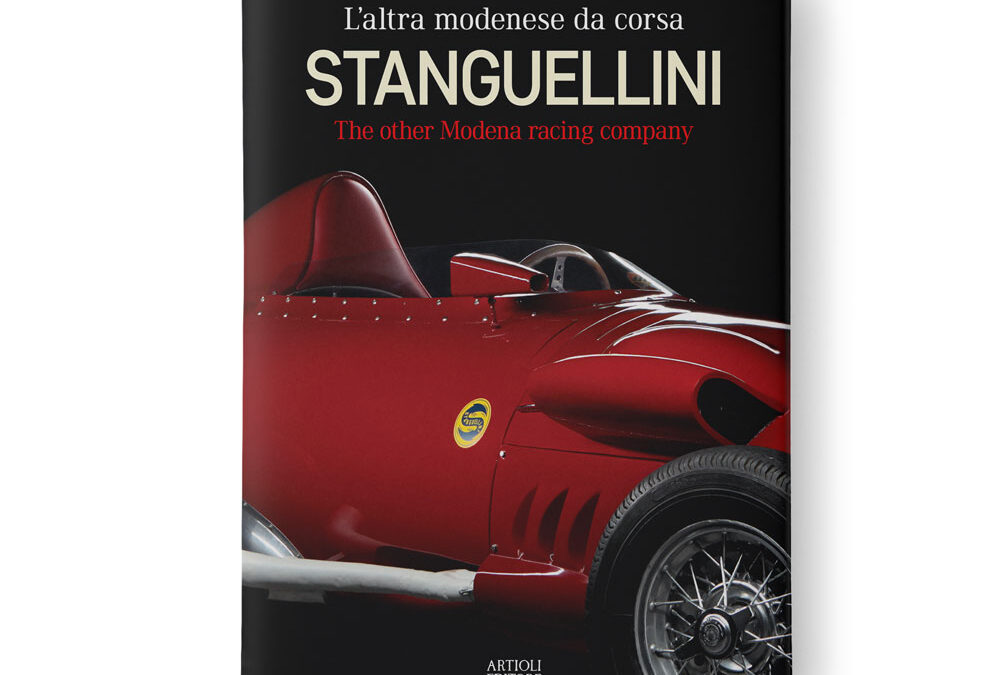
The first of the ten chapters included in the book is a bit of a provocation. In fact, it recalls how a ‘small’ Stanguellini Sport 1100 car, thanks to excellent road holding, beat the new and still ‘green’ Ferrari with a 12-cylinder engine of 1500 cc, in some races of the 1947 season, the debut one for the newly-founded Prancing Horse manufacturer. The ‘snub’ received from another Modena-based company, which was just as committed to the construction of sports cars, albeit with a smaller engine displacement, certainly annoyed Enzo Ferrari but in any case, he had very little to complain about. He had too much respect and friendship for the ‘Magician’ Vittorio Stanguellini, ever since the latter showed up in Modena racing circles in the company of his father Francesco, a pioneer of local motorsport. Stanguellini of Modena was a large family: in the second half of the 19th century, Celso, father of Francesco Sr., had founded a company for the construction of orchestral kettledrums with patented mechanical tuning. From there, it was a short step to the ‘mechanics’ of automobiles: Francesco Sr. became Fiat’s first representative in Modena, while his son Vittorio later extended the agreement with the Turin-based company, but his passion and technical ability also lead to the tuning and construction of racing cars as early as the early 1930s. Vittorio certainly knew his way around and he put together a small empire, based above all on the Sport 750 and 1100: the workshop in Viale Moreali, and later the larger one in Via Schedoni, become a worldwide benchmark, which from 1958/59 was confirmed with the construction of the Formula Junior cars (what would later become Formula 3), intended for up-and-coming drivers. The Stanguellini Formula Junior with a 90 hp Fiat 1100 engine and a top speed of 200 km/h was the most popular and successful car in the crowded category. However, the Formula Junior regulations required that the engine was derived from a production car, albeit with a wide range of tuning possibilities. As he was linked to Fiat, in the 1960s Vittorio Stanguellini, now flanked by his son Francesco Jr., built some Formula Junior (including the modern ‘Delfino’) and then Formula 3 single-seaters, with engines derived from the ‘1300’ and ‘124’ of the Turin-based company. Thanks to the copious archive material of the brand (photographs and documents), the book reconstructs in detail the history of the manufacturer from the blue ‘S’ on a yellow background (the colours of Modena), summarized by the extensive Museum, set up at the time by Francesco and now impeccably curated by his daughter Francesca: fifth generation of the ‘racing’ Stanguellini family. A chapter of the book is dedicated to the Museum and it is basically a ‘guided tour’ of the cars and the curiosities it hosts. The same cars, perfectly restored, were photographed outside in a spectacular way and can be admired in the ‘portfolio’ combined with the same book.
Hardcover
English and Italian Text
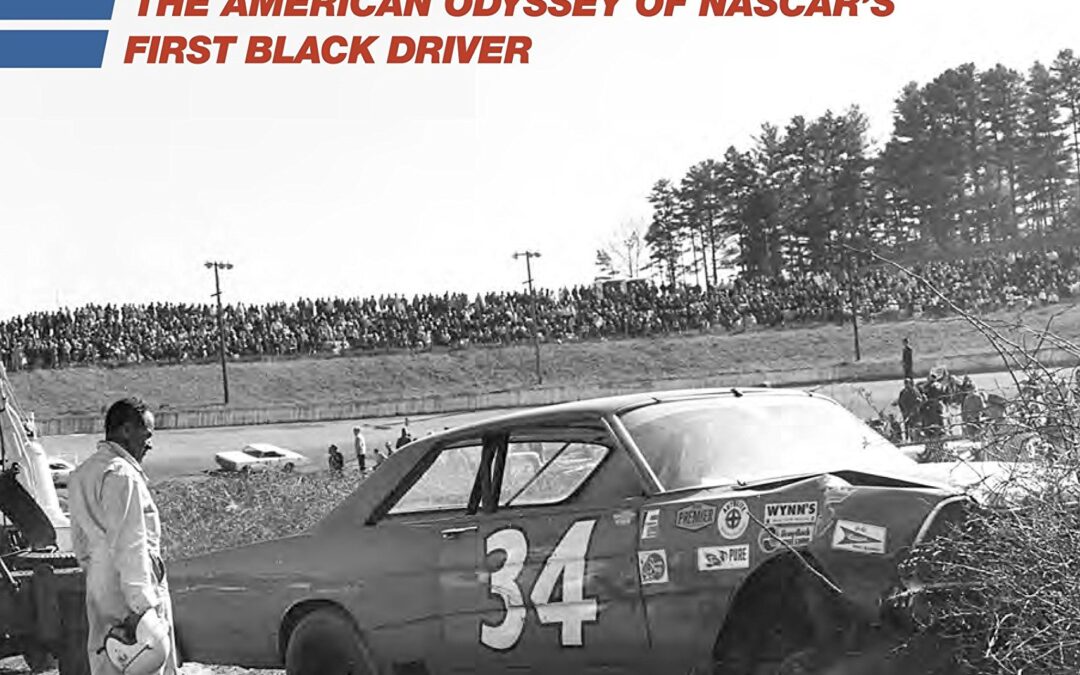
The American Odyssey of NASCAR’s First Black Driver
Hard Driving is the dramatic story of one man’s dogged determination to live the life he loved, and to compete, despite daunting obstacles, at the highest level of his sport.
Wendell Scott figured he was signing up for trouble when he became NASCAR’s version of Jackie Robinson in the segregated 1950s. Some speedways refused to let him race. “Go home, nigger,” spectators yelled. And after a bigoted promoter refused to pay him, Scott appealed directly to the sport’s founder, nascar czar Bill France Sr. France made a promise Scott would never forget – that NASCAR would never treat him with prejudice.
For the next two decades, Scott chased a dream whose fulfillment depended on France backing up that promise. Persevering through crashes, health problems, and money troubles, Scott remained convinced he had the talent to become one of NASCAR’s best.
Hard Driving documents a previously untold chapter in the history of integration, politics, and sports in America. It reveals how France, founder of the multibillion-dollar nascar empire, reneged on his pledge and allowed repeated discrimination against Scott by racing officials and other powerful figures. It details France’s alliances with leading segregationist politicians such as George Wallace, the reluctance of auto executives such as Lee Iacocca to sponsor a black driver; and the inspiring support Scott received from white drivers such as nascar champions Ned Jarrett and Richard Petty, who admired his skill and tenacity.
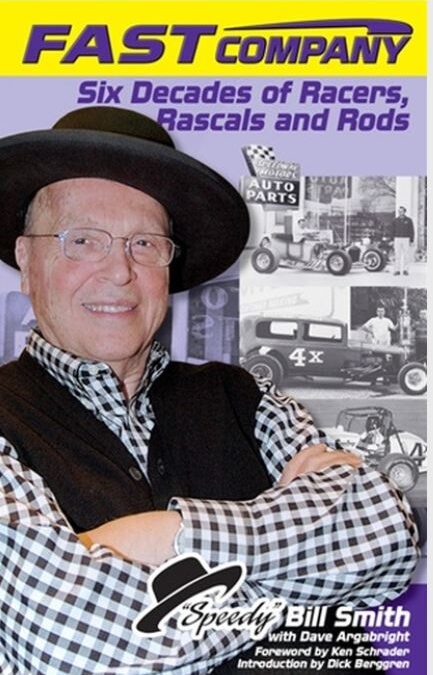
If you’re a racer, a race fan, a hot rodder, a businessman…heck, just about anybody who loves going fast will enjoy Fast Company. Speedy Bill Smith was an icon in both auto racing and the world of automotive performance, and in this book he shares the great stories and experiences of his amazing, unlikely life. He survived a couple of near-death experiences (literally), parlayed $300 into a performance empire, chased race cars and hot rods from coast-to-coast, rubbing shoulders with countless characters and rascals over the past 60 years.
This is an American success story…a little off-color, a little politically-incorrect, and a little over the top. As a car owner, Speedy Bill raced to win, and didn’t mind if he got under the skin of his competitors…in fact, he LOVED getting them fired up. Along the way he won too many races to count, made a ton of friends (and maybe just a few who weren’t so friendly), and rewrote the record books on many occasions.
Over the past ten years, Dave Argabright has teamed up with some of racing’s greatest personalities…Brad Doty, Jack Hewitt, Earl Baltes, Chris Economaki, and Doug Wolfgang. You’ll find Dave’s unmistakable style on these pages, and you’ll hear Speedy Bill’s voice in every word.
Jan Opperman? The real story. Surviving in business? The unvarnished truth about what it takes. Rough-and-tumble racing? Without pulling a punch. Wild and outrageous people? Right here, in the flesh.
More than anything, this is a book that will entertain and inform you. No B.S., no sugar-coating…just the world according to Speedy Bill!
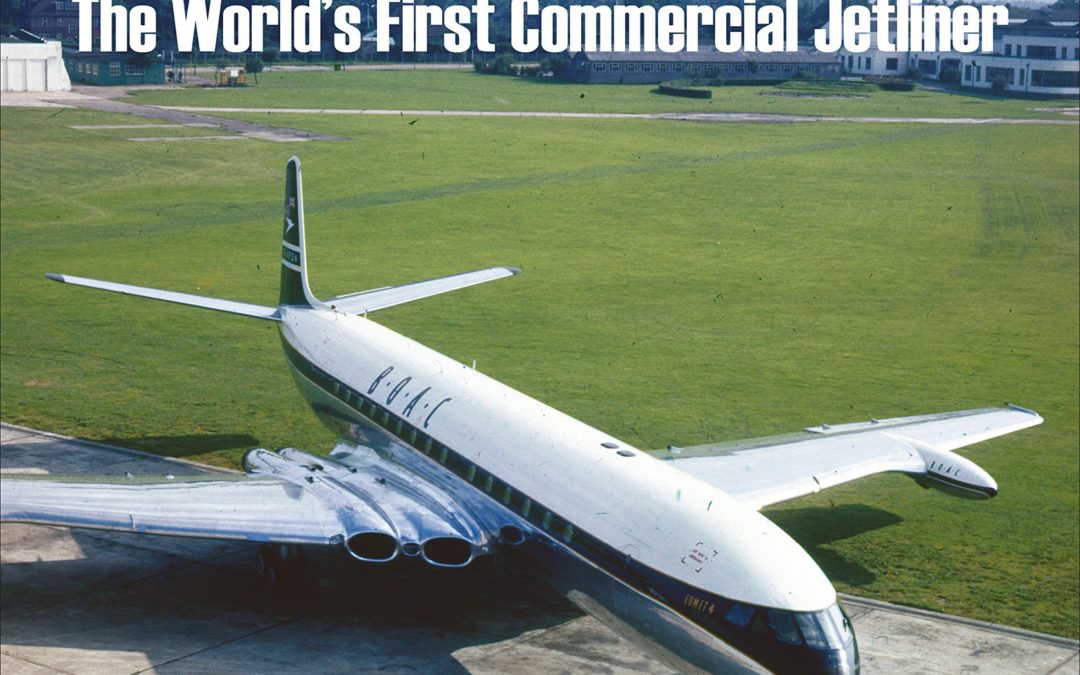
The world got a little smaller in July 1949 when the first jet-powered airliner took to the skies barely four years after the end of the Second World War.Not only was the de Havilland Comet 1 was a lot faster than previous airliners, it could fly higher and further. It was packed with new technology but, perhaps most importantly for those early passengers, it was a quiet, luxurious and even pleasant experience, something that could never be said for the noisy piston-engine aircraft that came before.The Comet’s leadership in jet travel for the future was assured until aircraft began crashing. The first ones were put down to pilot error but two disastrous events in 1954 grounded the fleet and Britain’s advantage over the rest of the world was lost. Boeing caught up with its ubiquitous 707 and the Comet was destined to become but a memory.However, rising from the ashes came a new Comet – one that was bigger and more powerful than before and designed for completely different roles. Where the first Comets had provided an expensive and plush way to travel for the rich few, the new Comet 4s carried more passengers to a multitude of destinations inevitably becoming key carriers for the early package holidaymakers. At the same time they became vital strategic transports for the RAF as the British Empire receded.This book tells the full story of the world’s first jet-powered airliner, from its remarkable beginnings, through its early flight trials program to its entry into service. The type’s military career is also covered, as is its construction; also included in this volume are details of the numerous variants produced and those still surviving as exhibits today. There are also twenty-four superb artworks by world-renowned aviation illustrator Juanita Franzi.
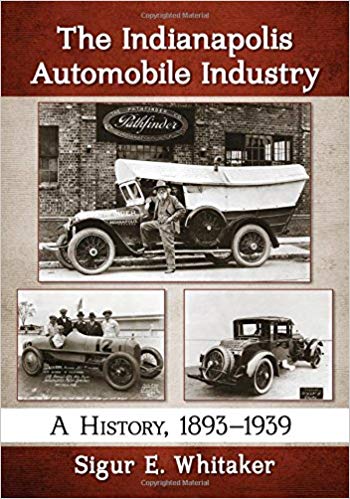
In 1893, Indianapolis carriage maker Charles Black created a rudimentary car–perhaps the first designed and built in America. Within 15 years, Indianapolis was a major automobile industry center rivaling Detroit, and known for quality manufacturing and innovation–the aluminum engine, disc brakes, aerodynamics, superchargers, and the rear view mirror were first developed there. When the Indianapolis Motor Speedway opened in 1909, hometown manufacturers dominated the track–Marmon, Stutz and Duesenberg. The author covers their histories, along with less well known contributors to the industry, including National, American, Premier, Marion, Cole, Empire, LaFayette, Knight-Lyons and Hassler.
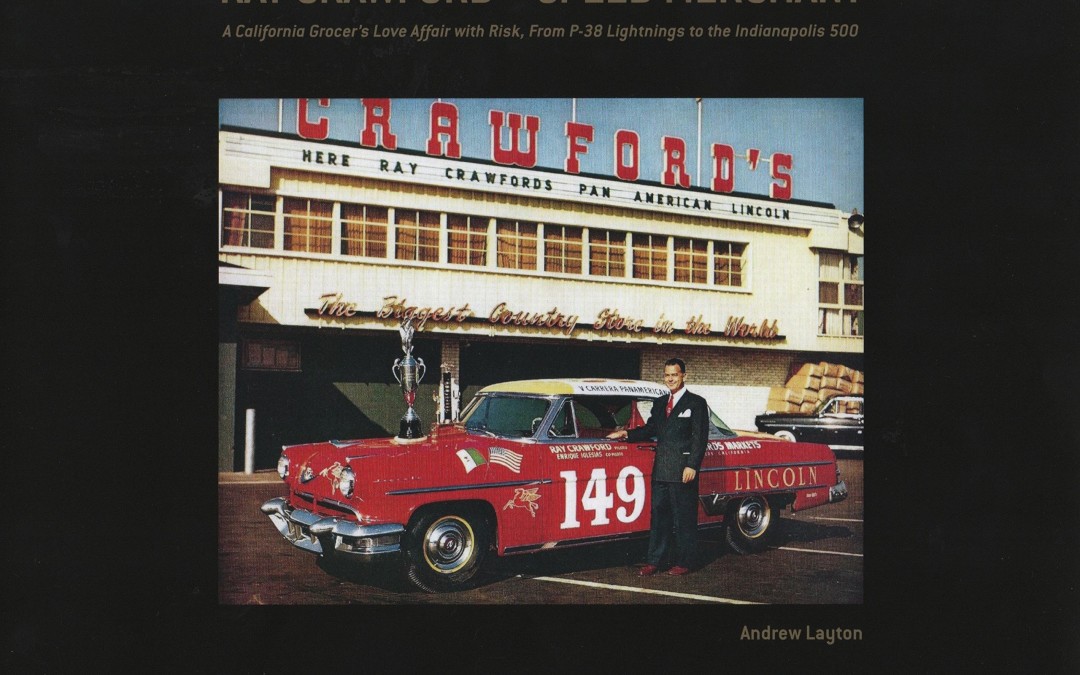
A California Grocer’s Love Affair with Risk, From P-38 Lightnings to the Indianapolis 500
Ray Crawford was one of the most versatile racing drivers of the 1950s – maybe ever. Aside from his upset victory in the 1954 Carrera Panamericana’s stock car division, widely considered to be the world’s most dangerous and grueling race, he competed passionately in sports cars, championship dirt cars, midgets and unlimited hydroplanes. On three occasions, he qualified for racing’s greatest spectacle, the Indianapolis 500. But for most of his driving career, Crawford was labeled a dabbling amateur by auto racing’s rough-and-tumble “in” crowd. The reason: his family’s supermarket empire through which his dreams of speed were financed. Controversial, yet charming and affable on the racetrack, few of Crawford’s competitors ever knew that his unbelievable daring was motivated by an equally audacious career as a decorated P-38 combat ace and test pilot that had turned sour. Drawing on family recollections, interviews with friends and colleagues, as well as Crawford’s own, un-published wartime letters – all amplified with over 150 photo selections by legendary auto racing publisher and filmmaker Dick Wallen – “Ray Crawford – Speed Merchant” tells the story of one of the most amazing personal journeys you’ve never heard of.
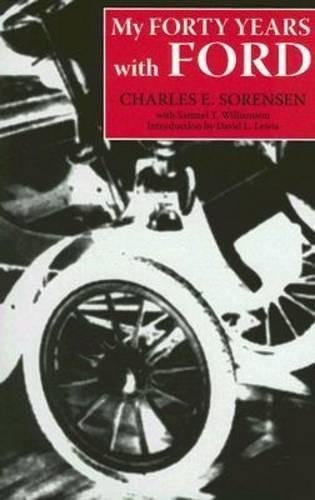
In My Forty Years with Ford, Charles Sorensen -sometimes known as “Henry Ford’s man,” sometimes as “Cast-iron Charlie”-tells his own story, and it is as challenging as it is historic. He emerges as a man who was not only one of the great production geniuses of the world but also a man who called the plays as he saw them. He was the only man who was able to stay with Ford for almost the full history of his empire, yet he never hesitated to go against Ford when he felt the interests of the company demanded it. When labor difficulties mounted and Edsel’s fatal illness was upon him, Sorensen sided with Edsel against Henry Ford and Harry Bennett, and he insisted that Henry Ford II be brought in to direct the company despite the aging founder’s determination that no one but he hold the presidential reins.
First published in 1956, My Forty Years with Ford has now been reissued in paperback for the first time. The Ford story has often been discussed in print but has rarely been articulated by someone who was there. Here Sorensen provides an eyewitness account of the birth of the Model T, the early conflicts with the Dodge brothers, the revolutionary announcement of the five-dollar day, and Sorensen’s development of the moving assembly line-a concept that changed our world. Although Sorensen conceived, designed, and built the giant Willow Run plant in nineteen months and then proceeded to turn out eight thousand giant bombers, his life’s major work was to make possible the vision of Henry Ford and to postpone the personal misfortune with which it ended. My Forty Years with Ford is both a personal history of a business empire and a revelation that moves with excitement and the power of tragedy.

Revealing the esteemed history of the world’s most famous locomotive
Few locomotives are as widely known or excite so much interest as the Flying Scotsman. Designed by Sir Nigel Gresley in 1923, the locomotive became a flagship for the London and North Eastern Railway and represented them at the British Empire Exhibition in 1924 and 1925. Thus began Flying Scotsman’s fame, which only continued as the locomotive broke records, becoming the first to exceed 100mph in 1934 and taking the longest journey of any steam locomotive in 1988–89. Passing through such hands as Alan Pegler’s and Pete Waterman’s after her retirement from British Railways, Flying Scotsman is now in public hands for restoration. Here James S. Baldwin uses his expert knowledge and unrivaled collection of images to highlight the illustrious career of this world-famous locomotive.

“Never in the field of human conflict was so much owed by so many to so few” so said British Prime Minister Winston Churchill at the height of the Battle of Britain. The ‘Few’ he spoke of were the British pilots who flew daily missions against the Luftwaffe as the Germans tried to force Britain out of the Second World War.
It was in large parts thanks to the stunning Supermarine Spitfire that they were able to resist the ferocious onslaught of thousands of Dorniers, Heinkels, Junkers and Messerschmitts. In fevered battle in bright skies over England’s south coast a few hundred pilots from across the Empire, and a brave handful of Americans in the famous ‘Eagle’ Squadrons, saved the country from the threat of Nazi invasion.
Now you can experience what it is like to fly one of these glorious machines as veteran flyer Tony Bianchi puts WWII ace Ginger Lacey’s personal Spitfire through its paces.
Everything is included in great detail from pre-take off checks, to a perfect three point landing with a vigorous aerobatic session thrown in for good measure. Bianchi’s commentary during your flight explains exactly what is required to fly a Spitfire – including tips and tricks that have been learned through long hours in the pilot’s seat.
This video why the Spitfire, like the North American Mustang (with which it shares a powerplant), was rated so very highly those who flew in it. Wartime pilots Peter Brothers CBE DSO DFC and Donald reveal the Spitfire’s unique superiority and present day Battle of Britain Memorial Flight Squadron Leader Paul Day adds his impressions.
The aircraft, filmed especially for this video, include Mark Ia, Mark Vb, Mark XIV, Mark XVI and Mark XIX.
The film is introduced by Alex Henshaw, the famous ‘30s aviator and Spitfire Chief Test Pilot who was crucial in developing the Spitfire throughout the war
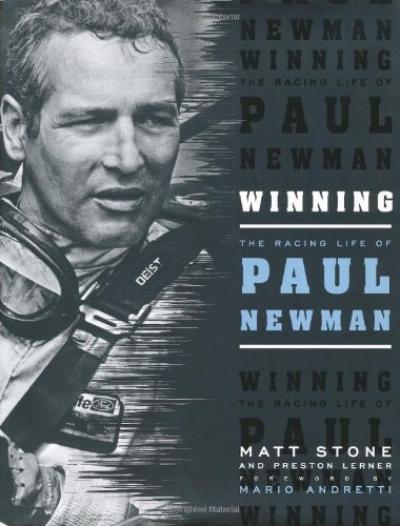
“Winner of International Automotive Media Gold Award 2010
For all his fame as one of Hollywood’s great actors, a world-class humanitarian, and the proprietor of a natural food empire, the late Paul Newman had another intriguing facet that was less known and perhaps closer to his heart than all the rest of his well-chronicled life. He was an avid, successful and well respected car racer and team owner. This book tells that story–from Newman’s racing career, begun in earnest at an age when many race car drivers contemplate retirement; to the partnership he formed in 1983 with Chicago racing entrepreneur and team owner Carl Haas; to the impressive stable of automobiles he owned, from the Porsches and Ferraris to quirkier modified VWs and Volvos.
This is the tale of a life full of passion and skill, of someone who entered the 24 Hours of Daytona at the age of 70 and made his last professional race outing at 82; whose roster of drivers for Newman/Hass reads as a who’s who of open wheel racing; and whose interest in cars extended from the likely suspects to old trucks and new hybrids. And then there’s the charming pal who, when the incorrigible prankster Robert Redford had a miserably wrecked Ferrari dropped at his front door, returned the favor by having the car, crushed into a cube, delivered to Redford’s living room. The anecdotes, the races, the cars–all are here, adding up to what for many would be a full life, but for Paul Newman was simply another side of a man of talent, conviction, and enduring spirit.
See Motorbooks author Matt Stone interviewed by Jay Leno on JayLenosGarage.com: http://www.jaylenosgarage.com/video/jays-book-club-matt-stone/1164286/“
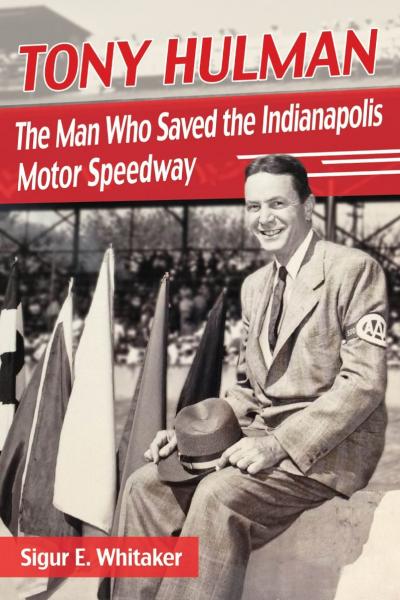
Almost unknown when in 1945 he purchased the Indianapolis Motor Speedway and its famous race, Tony Hulman soon became a household name in auto racing circles. He is credited with not only saving the Speedway from becoming a residential housing development but also with re-invigorating auto racing in the United States. Until his purchase of the Speedway, Hulman had not been involved in auto racing; he was the CEO of Hulman & Company, a wholesale grocer. An astute businessman, Hulman made Clabber Girl Baking Powder a national brand and successfully led the reorientation of the family fortunes to include a range of businesses including a beer company, a Coca-Cola franchise, a broadcast empire, and real estate and gas companies. This biography of Hulman focuses on his many ventures, including the Indianapolis Motor Speedway and Indianapolis 500 and his philanthropy.






















